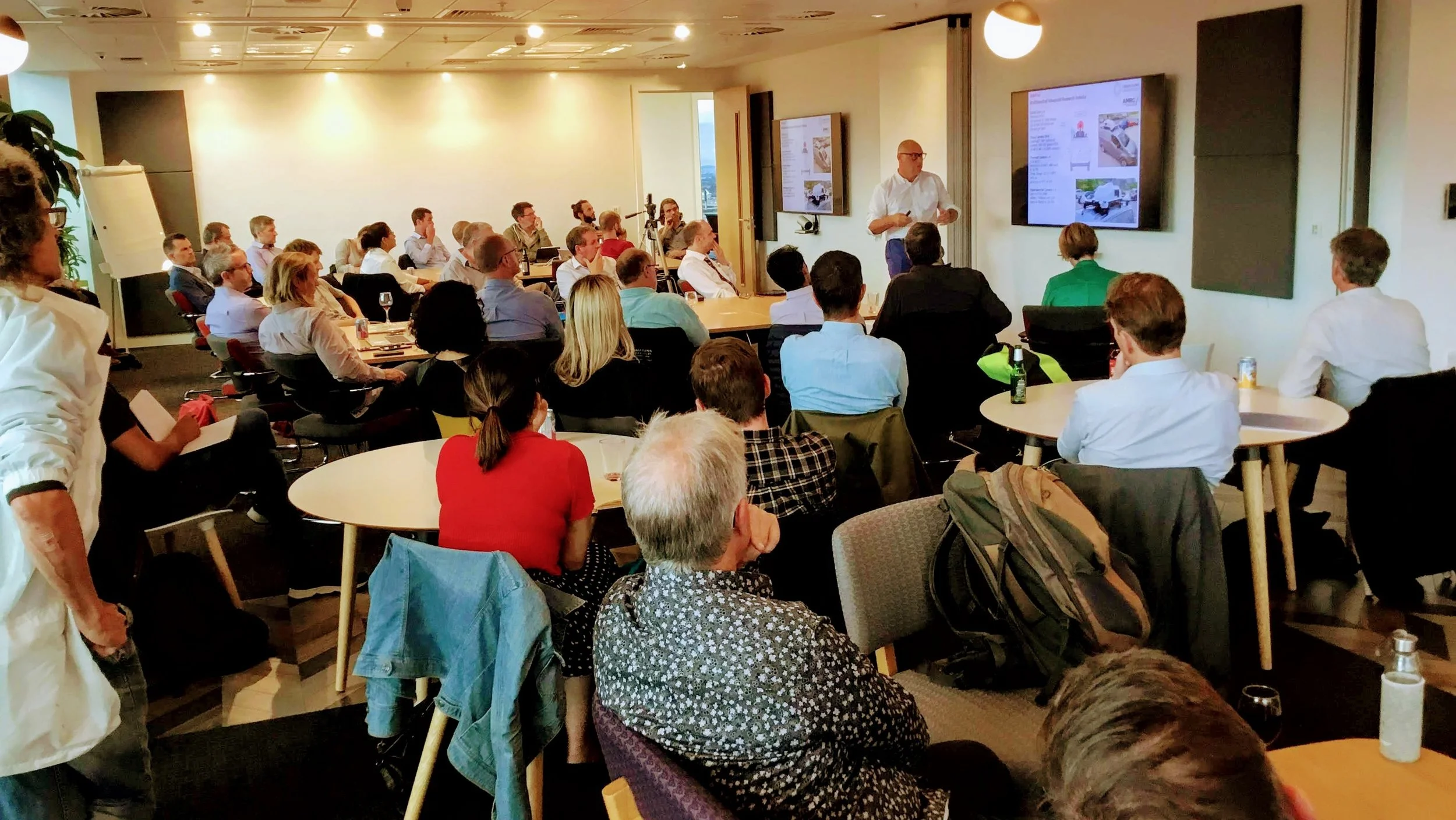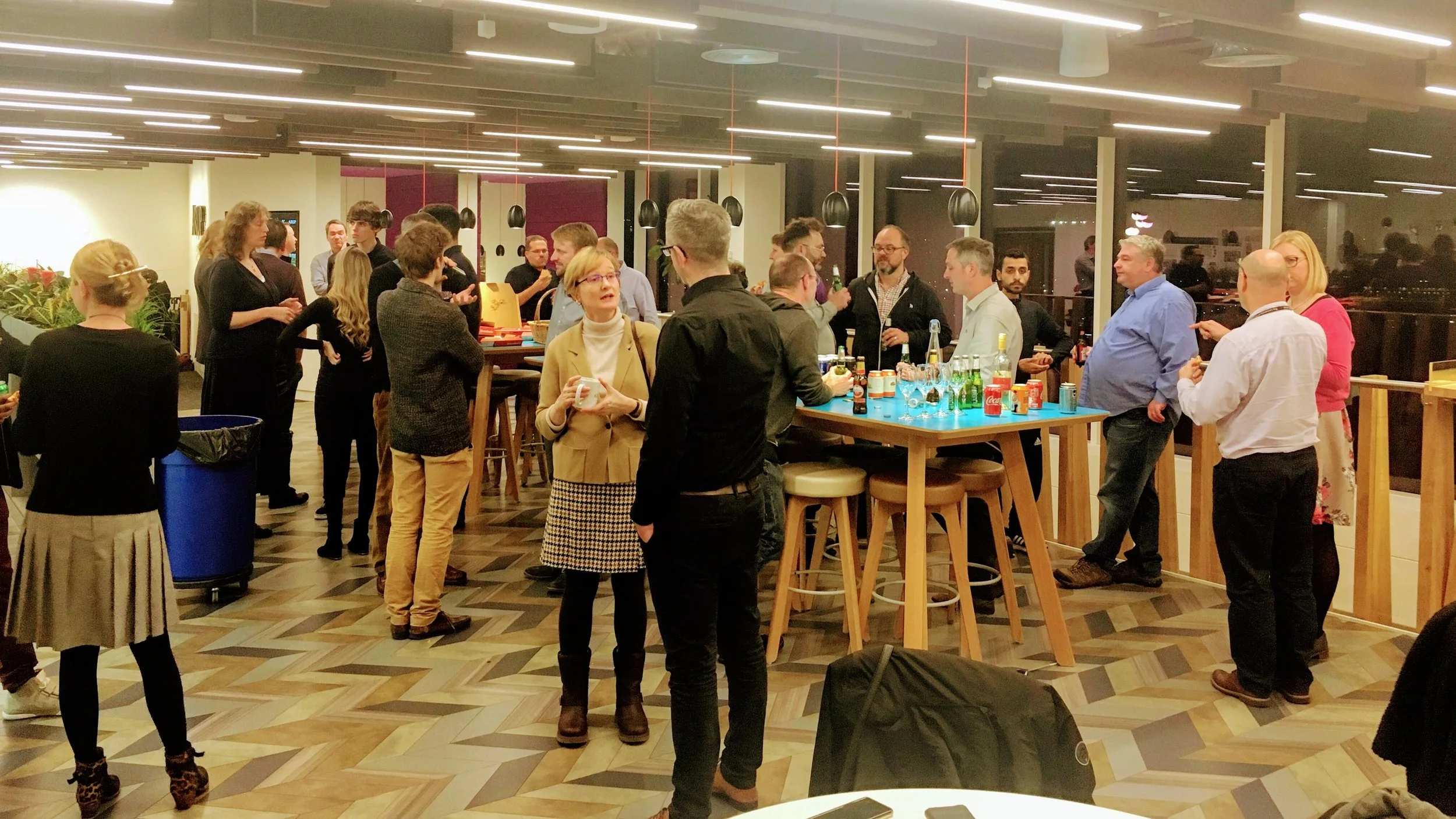Notes from SmartSheffield #13: Something in the Air
2nd September, 2019
It’s so good to be back! Thanks everyone for coming along - it was great to see everyone and have so many people there for the first event for our new season!
After a hiatus of more than nine months, we kicked off our new series with an excellent one on the topic of Air Quality. It’s one of the ‘standard’ smart city topics in many ways, and has long been an important issue at our events but is additionally pertinent at the moment as it’s increasingly clear just how bad the situation is in Sheffield, in part to local industry and traffic congestion, but also to its topology and local weather patterns. To attempt to address this, Sheffield City Council have undertaken a major consultation on the introduction of a clean air zone over the Summer, and, in addition, there are a number of projects underway to more accurately measure and address the situation. We were lucky enough to hear from the people behind many of them on the night.
Here are my notes:
Prof Martin Mayfield from The University of Sheffield
Update on the Urban Flows Observatory
Martin provided an overview of the mission of the observatory and it’s remit to build a comprehensive sensor network across the city in order to measure Sheffield’s ‘metabolism’ - the energy flows in and out - and then provided an update on where the project stands more than half way into it’s three year life.
He showed a breakdown of the data sets that are now being collected across four categories: Meteorology, Air Quality, Imaging and Environmental, along with the density of sensor coverage associated with each of these. The Air Quality network is the largets IoT-based network in the UK generating 36,217 data points from over 100 sensors, and they are using The Things Network to provide this capability. Their objectives are to set up a dense network of low cost sensors, investigate how reliable these sensors are and compare them to the reference network operated by Sheffield City Council and DEFRA. Then once this network has been modelled and verified, they will develop spatio-temporal pollution models in order to inform policy decisions, and also attempt to create a calibration model so that lower cost sensors can be used with a greater degree of confidence.
Urban Flows are nearing the end of their initial technology rollout, but there is still budget left for sensor and networking kit. They need to have spent this by the end of March next year, so if anyone has a good complimentary project requirement they should definitely get in touch!
Meanwhile they are organising a two day hackathon in November in conjunction with Sheffield Technology Parks to get project ideas surfaced and tested - there’s a prize pot of £50,000 available, more details are available from the Sheffield Digital website.
James Wilson from Growth Sheffield
Impacts and Interventions
James gave an extremely personal and informative talk on the health impacts of poor air quality, having himself received a pollution-related cancer diagnosis earlier this year. He covered the health science on the impacts of air pollution, and the differences between different kinds and sizes of pollutant. He then also presented a framework for understanding different levels of intervention, covering prevention, mitigation and avoidance and provided examples of specific initiatives in each of these categories. Some of these are already being trialed in Sheffield, including the #GoGoGreen ‘green barrier’ which is being erected around Hunters Bar Primary School, and which Rowan Hall and María del Carmen Redondo Bermúdez were on hand to explain in more detail later on.
Graham Turnbull from Clear Air Sheffield
Building a network of citizen-built Air Quality sensors
Graham started Clean Air Sheffield at the end of last year, following a petition he started to get support for increasing the safety around Sheffield’s schools. Someone asked whether being able to identify an increase in air pollution during school drop-off and pick-up times would be compelling enough to force road closures around schools at these times. This led Graham to starting the campaign and a facebook group and organising gatherings in pubs in order to build sensors to gather the necessary data. Since then through his efforts there are at least 100 air quality sensors deployed by private citizens across Sheffield and several in other cities as well (you can see the coverage on the luftdaten website).
The sensors are based on the Lufdaten model, and use Arduino WiFi boards together with particle counters and weather sensors housed inside weather-proof tubing (made from standard under-sink plumbing).
Graham then talked about what this network has discovered, including interesting findings around the time of day when pollution is at its worst, which is often not during rush hour as one might think, but during the night. This may well be down to a combination of cooling air causing pollutants that have been lifted up into the atmosphere to settle back down to earth as the temperature drops, and increasing humidity affecting the sensor readings and making them more sensitive. The network also shows that when the air quality is bad, it’s almost always bad everywhere, so there are days where it’s perhaps just not a good idea to go out at all…
He also shows how the findings from the low cost luftdaten network correspond with high quality reference sensors and while the luftdaten ones are perhaps a bit over-sensitive, the general trend lines match up well and so justify the insights gained as a result of using them.
FInally Graham talked about the lessons learned around building the network and what he might do differently going forwards.
With respect to the original question asked about schools and safety, the learnings so far are that:
Particulate levels not as expected, not easily correlated to local pollution sources ie. cars.
Readings vary greatly from time to time.
Worse during the evening / night.
Improve throughout the day.
Can see this across four school sites.
School sites slightly better than city average.
School sites slightly better than surrounding area.
All in all, this is a great effort, and Graham deserves more support. If you’re interested, please take a look at the Facebook Group Clean Air in Sheffield or get in touch with him on Twitter @CleanAirSheff
Simon Redding and Simon Nieder from Spire Innovations
AirSight
The two Simons provided an update on their environmental sensing activity in Chesterfield which has resulted in the development of the AirSight system. This is a low cost Things Network based solution that uses Adafruit M0 boards with real-time sensing of PM1/2.5/10, NO2, CO, NH3 and Volatile Organic Compounds (VOCs).
They describe in some detail the challenges that local authorities face, especially smaller ones, with the need to gather data on air quality, not just technical and spatial problems, but political problems as well around the possibility that they wouldn’t be able to do anything about problems were they able to be identified.
This is the context for AirSight - the ability to provide a low cost, easy access, high performance system which can be deployed quickly and which can provide very localised data in areas where problems are most likely.
Sensors are small and battery powered which means they can be deployed easily on lampposts and fences, while also being able to send data back in real time to a town-wide monitoring dashboard.
The Simons demoed this dashboard, showing how the data is visualised and how it can be made available to citizens in order to involve them in the development and deployment of sensors as well.
The system is about to be trialled in conjunction with the Derbyshire Air Quality Panel, Chesterfield College & Derbyshire Public Health.
We wish the effort all the best and look forward to hearing about the outcomes of the trials! Get in touch with them at Spire Innovations if you’d like to find out more.
Rowan Hall & María del Carmen Redondo Bermúdez
The #GoGoGreen green barrier campaign.
Rowan and María weren’t slated to speak, but were in the audience and were kind enough to stand up and tell us about the #GoGoGreen campaign. Rowan is a parent governor at Hunters Bar Infant School, and has been working with the school and the parents association to raise enough money to build a “green wall” vegetation barrier around the school playground, in order to mitigate the effects of pollutants from the nearby Ecclesall Road and Hunters Bar roundabout.
They’ve been successful in raising the funds and are now beginning with the installation of beds in preparation for planting.
The concept isn’t completely new - similar schemes have been tried in London, but with little scientific monitoring. This is something GoGoGreen are looking to avoid, and they have teamed up with Graham from Clean Air Sheffield for the sensors, and María from the Grantham Centre for Sustainable Futures who is providing the research rigour and will be compiling the results into what is hoped will be a detailed blueprint for other schools and communities wanted to achieve similar effects.
It’s a really great citizen initiative, and if successful will hopefully spawn many more green barriers across the country! If you’d like more information, follow #GoGoGreen on Twitter and read about the project at the Hunters Bar Infants School Website.
Chris Dymond from Unfolding
SmartSheffield News
To close the talky bit of the evening, I provided the regular update of recent goings on in urban innovation and technology, covering:
The new SmartSheffield event series and domain: SmartSheffield.city
The new IoT Sheffield meetup series
Sheffield City Council's Air Quality consultation
Sheffield City Council's Street Light Dimming Trial survey
Sheffield City Region's Future of Mobility review
Sheffield is through to the next round of the Future High Streets Fund
Sheffield City Council's imminent Digital Connectivity Strategy
Sheffield part of OpenReach FTTP rollout
Sheffield Digital's new Quarter Briefing publication on the local digital economy
"It's Our City" campaign has reached target and may affect Sheffield's governance.
Update on the Sheffield Things Network, which now shows 17 gateways operating in the city.
Once again, it was great to be back and see so many people at the event! As I mentioned we’re going to be hosting a SmartSheffield every two months at three different venues, as our new sponsors Pitch-In and Creative Space Management will host two events each as will Arup. We will also alternate with the new IoT Sheffield meetup series whcih is also being supported by Pitch-In and produced by Ioetec, who specialise in cyber security in the Internet of Things.
The next SmartSheffield is scheduled for November the 4th at the Electric Works - get the date in the diary now and we’ll send out confirmations very shortly!








